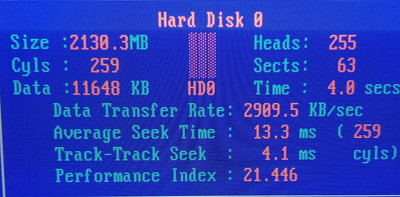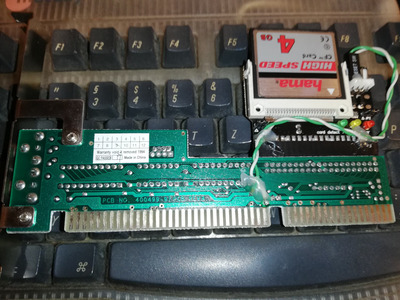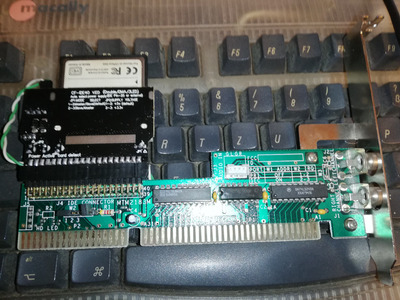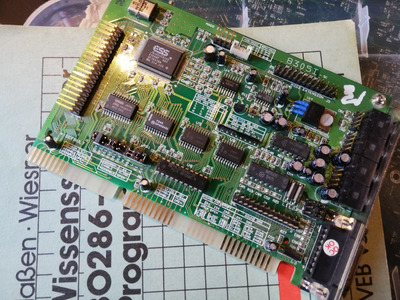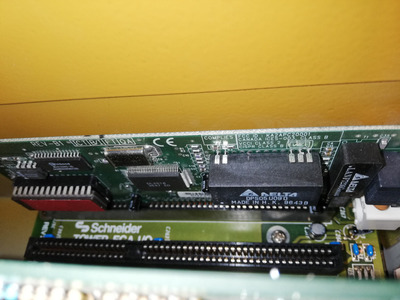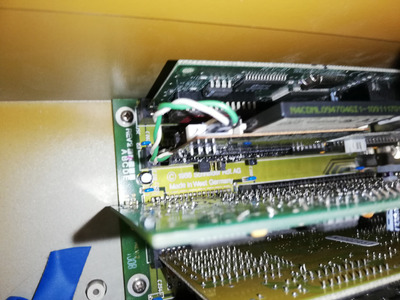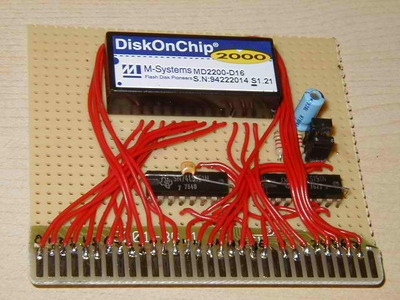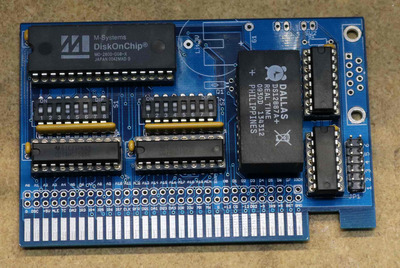Shponglefan wrote on 2022-09-27, 22:09:
Question regarding using XTIDE on NIC cards.
Oki-doki. ^^
Shponglefan wrote on 2022-09-27, 22:09:
Would a larger EPROM be an issue? I currently only have 128kB EPROMs on hand.
128KB is really large. The pinout certainly doesn't match that of an 2764 (8KB), 27128 (16KB) or 27256 (32KB). The maximum in the old days was 27512 (64KB), afaik, and had minor pinout issues already (simple adapter required).
https://tldp.org/HOWTO/Network-boot-HOWTO/a628.html
Maybe you can get an ATMEL AT28C64B?
https://retrocmp.de/hardware/xt-cf-lite/xt-cf-lite.htm
Alternatively, there are cheap 27xxx EPROMs in the form of OTPs. One-Time-Programmable EPROMs.
They can't be erased, sadly, because the quarz window is missing (too costly).
Anyway, here are some old images that worked for me:
Re: IDE disk-on-module + 386
They're still fine for testing/troubleshooting, though. The checksum is already written into it, auto-detection is enabled..
Can't remember, if boot support for Secondary IDE is enabled, though, sorry. 🤷♂️
Shponglefan wrote on 2022-09-27, 22:09:
If I was to program one of those and pad out the remaining storage in the chip, would it still work?
No, I'm afraid this doesn't work.
The address decoding in a PC doesn't work that way, sadly. 🙁
What you can do, however:
a) Fill the EPROM with duplicates of the image. The COPY command can help.
COPY /B (binary copy), more precisely.
You can do something like COPY /B IMAGE.BIN+IMAGE.BIN > 2X-IMAGE.BIN
b) Finish a), then disable some memory banks of the EPROM by tying some address pins high/low (to +5v or ground).
Use either resistors as pull-ups/pull-downs or do make some shorts (careful, not all chips like that).
The advantage of b) is, that the address space (UMA, 640KB-1MB) isn't filled with multiple copies of XTIDE Universal BIOS.
The b) method was used in the C64 days, to install several kernals in a single EPROM.
Shponglefan wrote on 2022-09-27, 22:09:
Or do I need an EPROM appropriate to what the NIC itself will support?
It would certainly cause less headaches, I assume.
Good luck! 🙂🤞
"Time, it seems, doesn't flow. For some it's fast, for some it's slow.
In what to one race is no time at all, another race can rise and fall..." - The Minstrel
//My video channel//
